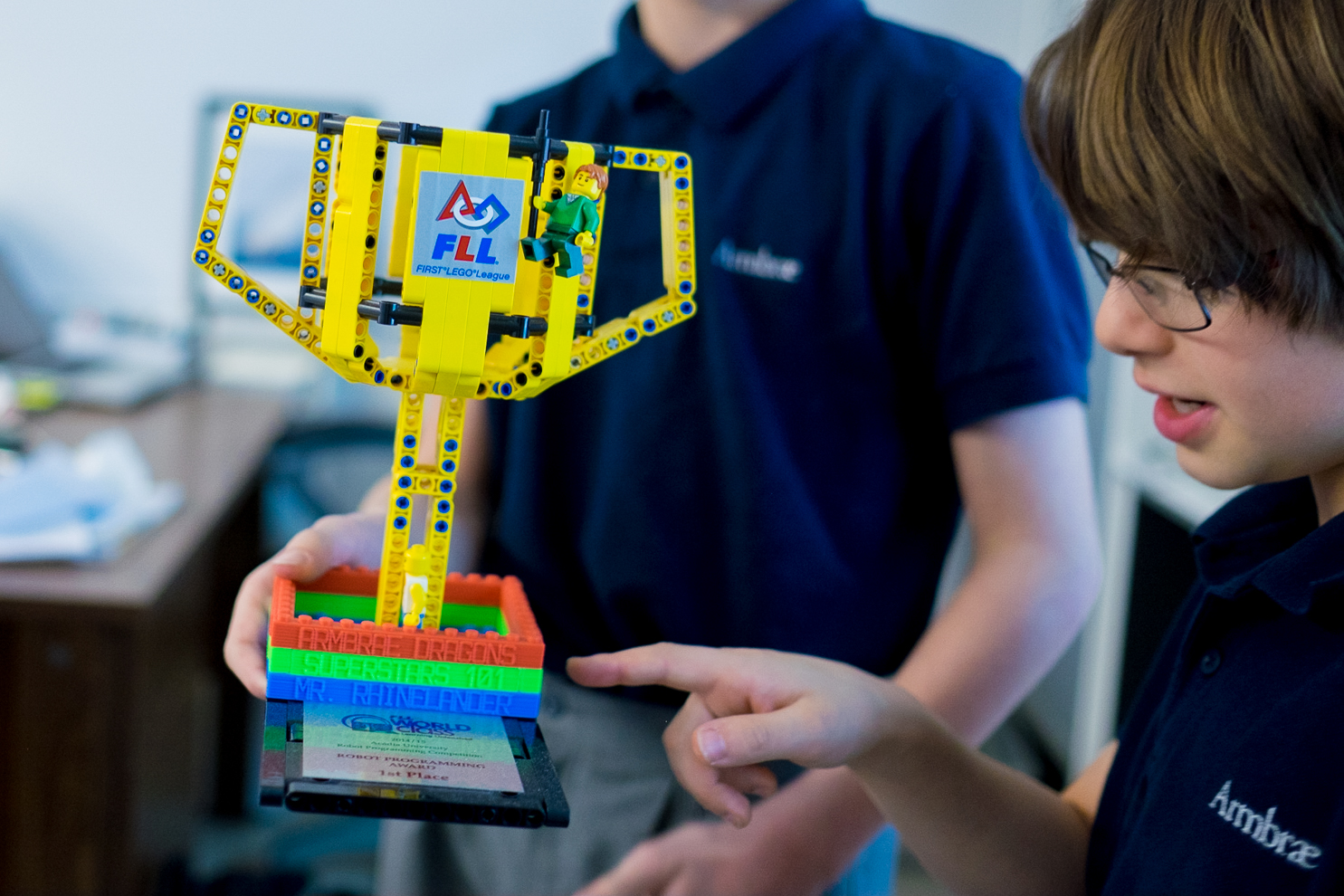Technology
Sort, pull, demolish: students put robots to the test
Armbrae robotics team prepares Lego robot for February provincials

caption

caption
Ayrton Stein and Aidan Cox prepare a test run with their team’s robot. They’re preparing for the FIRST LEGO League provincials happening at Acadia in February.It’s the last period of the day at Armbrae Academy and Alex Rhinelander is teaching his Grade 12 students to program animated lobsters to move around a screen using Java.
When the final bell rings, the older students leave the class and are replaced by a swarm of kids rushing into the computer science lab. They quickly get to work pulling out bins of Lego from the back of the classroom and lowering their robot arena from the ceiling. It’s about the size of a ping pong table.

caption
Students wait for their robot arena to be lowered from the ceiling.Rhinelander started the after school robotics program four years ago. Students meet twice a week to work on their robots.
When I ask them how old they are, a chorus of “Ten!” and “Eleven!” ring back at me.
There are about 20 students in two teams. One of the teams, the Dragonites, have been invited to participate at the First Lego League provincials in February at Acadia University. It’s part of a robotics competition organized by Lego, hosted by schools and participated in by students around the world. Over 400 students will compete at Acadia in February.
[idealimageslider slug=”armbrae-robotics”]
They don’t have much time to talk. One of the team members, Ayrton Stein is busy programming.
“I think we should run every mission three times,” he says, “to make sure it will work.”
The main goal for the robots is to be able to run the missions consistently. To do that, they line the robot up, run it, see how it does, tweak the code and then start again.
Ayrton works to modify their code. The robot uses a special language called Lego Mindstorms, originally created at MIT. Stein is in Grade 5 and he was on the team last year, too. He does a lot of the coding and helped bring home the Programming Award from provincials in 2015.

caption
Ayrton Stein points to his name on a trophy his teacher Alex Rhineland made to celebrate their 2015 Lego programming award. Rhineland made the trophy using the classroom’s 3D printer.The competition is broken down into two parts:
Robot Game
First, the students need to code a robot to complete a series of missions in the arena. The robot needs to sort, pull, demolish and drive its way through various obstacles. The catch? It only has 2.5 minutes to complete as many tasks as possible.
The Lego robot will have to traverse a series of obstacles across the board.
Each year, Lego releases different themes for the challenge. This year’s theme is Trash Trek. All the missions have to do with managing garbage.
During the mission, one of the students acts like the pit crew at NASCAR. They swap out the robot’s accessories between missions and outfit it to complete different tasks within the allotted 2.5 minutes.
Research Challenge
In the room next door, a research team of four are working hard to put together their ideas for how to deal with e-waste, i.e. our unwanted tablets and computers.

caption
(L to R) Eliza Rhinelander, Zoë McGrath, Sarah Finkle and Ecem Heywood make up the research team. In February they’ll present to judges at the FIRST LEGO League provincials their solution for dealing with e-waste.The four are debating how they should create and present their idea.
“It’s very ambitious,” says Zoë.
This isn’t Ecem’s first encounter with technology.
“I always have a computer with me,” she says. Both her parents are computer scientists.
The four aren’t just excited about going to Acadia for provincials.
“Acadia is the best place to do provincials because the cafeteria is amazing,” says Ecem. They all agree.
But there’s more at stake here than just cafeteria cookies. The top teams from provincials have a shot at going to the First Lego world championship in St. Louis, Mo. in April.
The team that didn’t pass the qualifying competition is excited, too. They’ll still go to Acadia in February to cheer on their classmates. They’re tinkering around with their robot, trying to improve it.

caption
Programmer Mariana Mejia-Ortega and her teammates work on a piece of code to make their robot move faster.Their team’s robot suffered from stage fright during qualifiers.
“He’s quite shy,” says Mariana Mejia-Ortega. Mariana is the only female programmer on her team. She’s twelve, and this is her first year doing robotics. She’s the main programmer for her team.
“I find Lego really interesting because it’s so much fun to build and create your own things, though at the same time I also really like programming because I really like technology.”
The students started practicing with their robots in October. They’re not only learning coding skills outside their regular computer science program, but also working together to solve problems. There were a lot of laughs as Mariana’s team endeavoured to program their robot to make wookie noises, just like Chewbacca.
About the author
Mel Hattie
Mel Hattie is a travel journalist from Canada's east coast. She's currently in the MJ New Ventures stream at the University of King's College....
